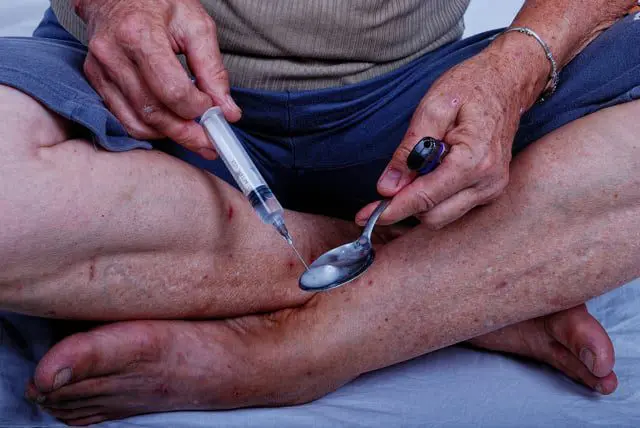When a minor finds themselves entangled in the juvenile justice system, understanding the intricacies of fianzas for juvenile offenders becomes crucial for families navigating this challenging terrain. The process of securing release for a young person accused of a crime involves unique considerations that set it apart from adult cases. These special circumstances reflect the justice system’s approach to balancing public safety with the rehabilitation and protection of young offenders.
El concepto de bail for juveniles is fundamentally different from that of adults. While the primary purpose remains the same – to ensure the accused appears for court proceedings – the juvenile system places a greater emphasis on the minor’s welfare and potential for rehabilitation. This focus stems from the recognition that young people are still developing and may be more amenable to positive interventions than adult offenders.
One of the most significant differences in juvenile bail cases is the role of parents or guardians. Unlike adult defendants who can independently seek bail, minors typically rely on their parents or legal guardians to navigate the bail process. This involvement of family members adds an extra layer of complexity to juvenile bail situations, as the court often considers the family’s ability to supervise and support the minor when making decisions about release.
En bail hearing for a juvenile offender is a critical juncture in the legal process. During this hearing, a judge considers various factors to determine whether to grant bail and, if so, under what conditions. These factors may include the severity of the alleged offense, the minor’s prior record (if any), their ties to the community, school attendance, and family support structure. The judge’s primary concern is balancing the minor’s best interests with public safety considerations.
It’s important to note that not all juvenile cases involve bail. In many instances, especially for less serious offenses, the court may opt for alternatives to detention. These alternatives might include release on recognizance, where the minor is released to their parents or guardians with a promise to appear for future court dates. Other options could involve home detention with electronic monitoring or placement in a community-based supervision program.
When bail is set for a juvenile offender, the amount is typically lower than what might be expected for an adult facing similar charges. This reflects the understanding that most families do not have substantial financial resources and that keeping a minor in detention can be detrimental to their development and rehabilitation prospects. However, even with lower bail amounts, many families still struggle to come up with the required funds.
This is where bail bond companies specializing in juvenile cases can play a crucial role. These companies offer surety bonds that allow families to secure their child’s release by paying a fraction of the total bail amount, usually around 10%. However, it’s essential for families to understand that working with a bail bond company comes with significant responsibilities and potential financial risks.
When a family uses a bail bond service for a juvenile case, they typically become the indemnitor on the bond. This means they are responsible for ensuring the minor appears at all required court dates and complies with any conditions set by the court. If the juvenile fails to meet these obligations, the family could be held liable for the full bail amount, which can have severe financial consequences.
The conditions attached to a juvenile’s release on bail are often more stringent and tailored to the minor’s specific circumstances than those for adults. These conditions might include mandatory school attendance, curfews, counseling or therapy sessions, drug testing, and restrictions on associating with certain individuals. The court may also require regular check-ins with a probation officer or participation in community service programs.
One unique aspect of juvenile bail cases is the potential for programas de rehabilitación to be incorporated into the release conditions. Courts often view the period between arrest and trial as an opportunity to intervene positively in a young person’s life. As such, participation in educational programs, vocational training, or substance abuse treatment may be mandated as part of the bail agreement. These requirements aim to address underlying issues that may have contributed to the alleged offense and support the minor’s personal growth and development.
The confidentiality of juvenile proceedings adds another layer of complexity to bail situations for minors. While adult criminal cases are typically matters of public record, juvenile cases are generally kept confidential to protect the minor’s privacy and future prospects. This confidentiality extends to bail proceedings, which means that information about a juvenile’s bail status and conditions may not be publicly accessible. This can sometimes create challenges for bail bond companies and families trying to navigate the system.
It’s crucial for families to understand that the use of bail bonds in juvenile cases is not without controversy. Critics argue that the bail system, even when applied to juveniles, disproportionately affects low-income families and minorities. This has led to ongoing debates about bail reform, with some jurisdictions moving towards systems that rely less on monetary bail and more on risk assessment tools to determine pretrial release conditions for both juveniles and adults.
The impact of pretrial detention on juveniles can be particularly severe, which is why many advocates push for alternatives to bail whenever possible. Research has shown that even short periods of detention can disrupt a young person’s education, family relationships, and mental health. Moreover, pretrial detention has been linked to higher rates of recidivism among juveniles, potentially setting them on a path towards further involvement in the criminal justice system.
For families facing the prospect of securing bail for a juvenile offender, it’s essential to seek legal counsel experienced in juvenile law. An attorney can help navigate the complexities of the juvenile justice system, advocate for reasonable bail conditions, and potentially argue for alternatives to monetary bail. They can also help families understand the potential consequences of using a bail bond service and explore all available options for securing the minor’s release.
El papel de mental health considerations in juvenile bail decisions has gained increasing attention in recent years. Many young offenders struggle with undiagnosed or untreated mental health issues that may have contributed to their alleged criminal behavior. Courts are becoming more aware of this connection and may consider mental health evaluations as part of the bail decision process. In some cases, participation in mental health treatment programs may be required as a condition of release, aiming to address underlying issues and reduce the likelihood of future offenses.
Another important aspect of juvenile bail cases is the potential for diversion programs. These programs aim to redirect young offenders away from the traditional court system and towards community-based interventions. In some jurisdictions, participation in a diversion program may be offered as an alternative to bail or as a condition of release. These programs often focus on restorative justice principles, allowing juveniles to make amends for their actions while avoiding the potentially harmful effects of formal court proceedings and detention.
La intersección de immigration status and juvenile bail adds another layer of complexity to some cases. For non-citizen juveniles, involvement with the justice system can have serious immigration consequences. Families and legal representatives must carefully consider how bail decisions and plea agreements might affect a minor’s immigration status. In some cases, remaining in detention might paradoxically be safer from an immigration perspective than accepting certain bail conditions or plea deals.
The use of risk assessment tools in juvenile bail decisions is a growing trend that merits attention. These tools aim to provide judges with objective data to inform their decisions about pretrial release. However, the use of such tools in juvenile cases is controversial, with critics arguing that they may perpetuate racial and socioeconomic biases. Families and advocates should be aware of whether such tools are being used in their jurisdiction and understand how they might impact bail decisions.
Another consideration in juvenile bail cases is the potential for electronic monitoring as an alternative to or condition of release. While electronic monitoring can allow a minor to remain in their community and continue their education, it also comes with challenges. Families need to understand the technical requirements, potential costs, and privacy implications of electronic monitoring systems. Moreover, the psychological impact of constant surveillance on a developing adolescent is a factor that courts and families must carefully consider.
El papel de school involvement in juvenile bail situations is another unique aspect to consider. In many cases, schools play a significant role in a minor’s life and can be valuable partners in supervision and support during the pretrial period. Tribunales may require regular school attendance reports as part of bail conditions, and in some cases, school officials may be involved in developing and monitoring a support plan for the juvenile. This school-justice partnership can be crucial in keeping a young person on track academically and behaviorally while awaiting trial.
For juveniles charged with more serious offenses, the possibility of being tried as an adult can significantly impact bail considerations. In such cases, the bail process may more closely resemble that of adult criminal proceedings, with potentially higher bail amounts and stricter conditions. The decision to try a juvenile as an adult is typically made early in the legal process and can have profound implications for bail, potential sentences, and long-term consequences.
El concepto de justicia reparadora is increasingly being incorporated into juvenile bail and pretrial processes. This approach focuses on repairing the harm caused by the alleged offense rather than purely punitive measures. In some jurisdictions, participation in restorative justice programs may be offered as an alternative to traditional bail or as a condition of release. These programs often involve mediation between the offender and the victim, community service, and other activities designed to promote accountability and healing.
Another important consideration in juvenile bail cases is the potential for peer influence and the need for positive mentorship. Courts may consider a minor’s social environment when setting bail conditions, potentially requiring separation from negative influences or participation in mentoring programs. Some jurisdictions have implemented peer court systems, where fellow youth are involved in determining appropriate consequences and support measures for juvenile offenders.
El papel de technology in juvenile bail and supervision is an evolving area that families and legal professionals need to be aware of. Beyond electronic monitoring, some jurisdictions are experimenting with smartphone apps for check-ins, video conferencing for court appearances, and online platforms for accessing support services. While these technological solutions can offer convenience and reduce the need for in-person appearances, they also raise questions about privacy, access, and the appropriateness of digital interventions for young people.
Substance abuse issues often intersect with juvenile offenses, and addressing these concerns can be a critical component of bail conditions. Courts may require drug testing, participation in treatment programs, or attendance at support group meetings as part of a release agreement. Families should be prepared for the possibility of these requirements and understand the resources available in their community for substance abuse treatment tailored to adolescents.
The potential for media involvement in high-profile juvenile cases can complicate bail proceedings. While juvenile records are generally confidential, cases involving serious crimes or public safety concerns may attract media attention. This publicity can influence public opinion and potentially impact judicial decisions regarding bail. Families and legal representatives may need to navigate media inquiries while protecting the minor’s privacy and legal interests.
Cultural competency in the juvenile justice system is an increasingly important consideration, particularly in bail decisions. Courts are becoming more aware of the need to consider cultural factors when setting bail conditions or offering alternatives to detention. This might involve culturally specific mentoring programs, consideration of language barriers, or recognition of cultural practices that could impact a minor’s ability to comply with certain conditions.
En educación financiera aspect of juvenile bail bonds is often overlooked but critically important. Many families enter into bail bond agreements without fully understanding the long-term financial implications. Educational programs that help families navigate the financial aspects of bail, understand their obligations, and make informed decisions about whether to use a bail bond service can be invaluable. Some jurisdictions and non-profit organizations offer financial counseling services specifically tailored to families involved in the juvenile justice system.
Trauma-informed approaches to juvenile justice are gaining traction and can influence bail decisions and conditions. Recognizing that many young offenders have experienced trauma, courts may incorporate trauma assessments into the bail process and mandate participation in trauma-focused interventions as part of release conditions. This approach aims to address underlying issues that may contribute to delinquent behavior while supporting the minor’s overall well-being.
El papel de community organizations in supporting juveniles released on bail is another important consideration. Many communities have non-profit organizations that offer support services, mentoring, and advocacy for youth involved in the justice system. Courts may look favorably on release plans that incorporate support from these community resources, viewing them as valuable partners in supervising and assisting young people during the pretrial period.
As the juvenile justice system continues to evolve, staying informed about bail reform efforts and changes in local laws is crucial for families and professionals working with young offenders. Some jurisdictions are moving towards systems that rely less on monetary bail for juveniles, instead focusing on risk assessment and community-based supervision. Understanding these trends and how they might impact individual cases is essential for navigating the bail process effectively.
In conclusion, the landscape of juvenile bail bonds is complex and multifaceted, requiring a nuanced understanding of legal, social, and developmental factors. For families navigating this challenging terrain, knowledge is power. Understanding the unique considerations that apply to juvenile cases, from the role of parents and guardians to the emphasis on rehabilitation and the potential for alternatives to traditional bail, can make a significant difference in outcomes for young offenders. As the juvenile justice system continues to evolve, staying informed about local laws, reform efforts, and available resources is crucial for ensuring that young people have the best possible chance at rehabilitation and a positive future.
Website citations:
- https://www.deltabail.com/comprehensive-guide-to-juvenile-bail/
- https://www.thehoffmanfirm.net/blog/2023/july/exploring-rehabilitation-programs-for-juvenile-o/
- https://www.justia.com/criminal/offenses/other-crimes/juvenile-crimes/constitutional-rights-for-juvenile-defendants/
- https://www.barrinobonds.com/post/bail-bonds-for-juveniles
- https://delaughterbailbonds.com/blog/juvenile-justice-how-the-system-fails-our-youth/
- https://bailhouse.com/bail-bonds-info-center/navigating-juvenile-offenses-how-to-secure-bail-bonds-with-confidence
- https://capitol-bail-bonds.com/juvenile-offenses/
- https://www.californiacriminaldefender.com/rehabilitation-programs-for-juveniles-in-california-pathways-to.html









